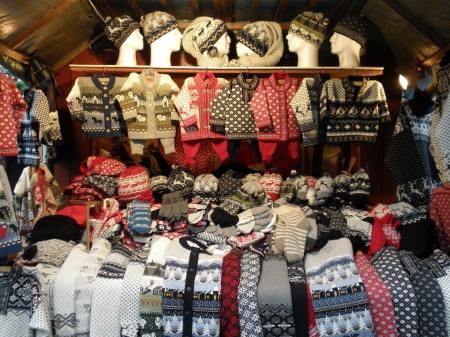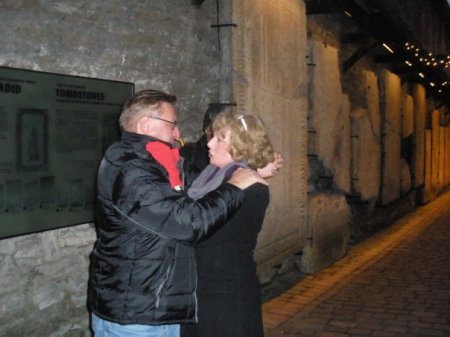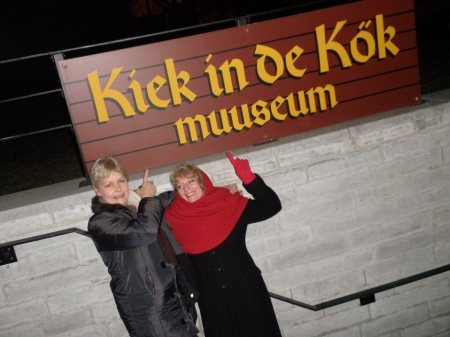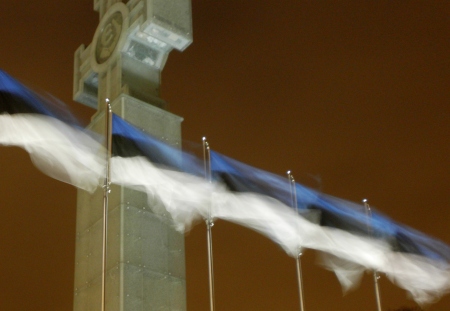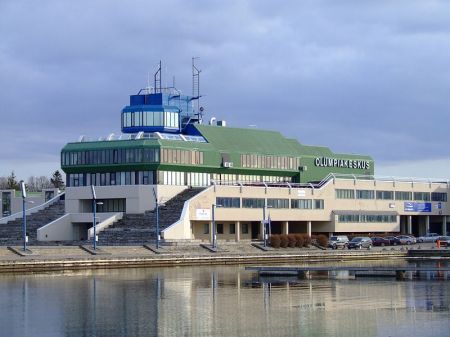We had one final morning in Tallinn before returning to the airport so whilst Mike W and Helene stayed behind the rest of us went out for a last look at the city, which in 2011, along with Turku in Finland, was going to become the European Capital of Culture. It was already busily preparing for the occasion, planning an agenda of special events and holding competitions for ideas, creative works and ecological souvenirs. The theme the city chose for its programme was ‘Stories of the Seashore’ and the idea was to re-open the city to the sea, and with the help of writers, musicians and actors, tell the stories of Estonia’s spiritual and cultural connection to the sea.
As we stepped out of the front door of the hotel a single snow flake fell gently from the sky and as we looked into the clouds for more a second and then a third and then too many to count and we were delighted to see it. It wasn’t thick snow, just little dry crystals that landed on our coats and then quickly melted away but we weren’t complaining, it was snow and that was what we were hoping to see. And there was some soft blue sky as well that was competing with the clouds so it looked as though all we had hoped for was coming along at the same time.
We took the route into the city that Kim and I had discovered the day before but just as we approached the Aleksander Nevski Cathedral we had a problem when the sole on Christine’s left boot became separated from the upper and started to flap about uncontrollably making it difficult to walk.
This was the just the sort of incident that required Micky Dawson because he would have been sure to have a tube of superglue or a roll of sticky tape, or perhaps even a spare pair of boots in one of his pockets to deal with the situation. We found a piece of plastic tape and made a first attempt but it wasn’t long enough and didn’t last more than a couple of hundred metres and by the time we arrived at the market we needed a better solution. Mike and I searched around, looking through litter bins and in the gutter and then just as we were about to give up we found a piece of elastic bungee rope that Mike was able to convert into a perfect fix and Christine was able to carry on.
It was snowing quite heavily by this time but it was still only tiny dry flakes and not nearly substantial enough to settle in the streets but there was already a gentle dusting on the gabled rooftops and on the Market Square Christmas tree and the town was beginning to assume a wintery appearance. There was nothing in the market that we hadn’t already seen so we completed a quick circuit and then with the snow beginning to cling to our coats decided that it was time for a final drink in Tallinn.
In one corner of the square there was an archway and behind that a narrow lane where there was a little café/bar called the Kehrwieder Chocolaterie that had an inviting appearance so we went inside and discovered a most charming shabby/chic interior with rustic furniture and comfortable chairs, the crackle of a log fire and the smell of chocolate and seasonal spices. With traditional Christmas decorations it was like a scene from a Yule tide picture postcard and we sat and chatted and enjoyed our drink and through the windows watched as the snow continued to fall.
It was so nice that we could easily have stayed longer but the morning was slipping away and so after we had settled up and used the curious single toilet in a cupboard in the corner of the room we left and strolled about the square and the side streets for just a little while longer before taking the route back to the hotel through Freedom Square and past Kiek in de Kök one last time. As we walked the snow stopped and the weather returned to the predominant grey of the last two days but we were happy now that we had seen it.
At the hotel we collected our bags, I paid 50 Eeks for the wine glass that Kim had broken the previous day and then our taxis arrived and took us back to the airport where there was a thirty minute delay before our plane departed and took us back to Stansted. This was not the best journey ever as we managed to get surrounded by young children and although I was fine because of the granddad implant it wasn’t so good for the others when a two year old in front cried and screamed for the entire journey.
We had all enjoyed Tallinn, the food, the drink, the Christmas Market, the unnecessary bus journey, the sightseeing and the snow. This was the tenth trip for the holiday club and the only anticlimax for us all was that Micky wasn’t there to share the occasion with us and we hoped that the smoked elk sausage that we bought him as a souvenir would help with his own disappointment. Unlikely!




